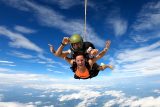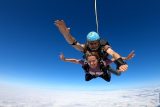Skydiving Rules and Regulations
Blog
 Posted by: Curtis White
3 years ago
Posted by: Curtis White
3 years ago
In the amended words of Cyndi Lauper, “Skydivers just want to have fun!” Although, as dedicated as we are to living it up in the moment and having a good time, skydivers are also, surprisingly, fairly fastidious sticklers for the rules. In a sport like skydiving, rules are not devised to “cramp our style.” Rather, skydiving rules and regulations have been put in place to allow us to enjoy this amazing adventure sport while simultaneously mitigating the risks involved. Wondering just what these skydiving rules and regulations are? Keep reading–here are the skydiving rules you need to know!
Top Skydiving Safety Rules
There are two organizational bodies that preside over the sport of skydiving. The Federal Aviation Administration (FAA) is a U.S government agency that regulates all aspects of civil aviation–including skydiving.
The United States Parachute Association (USPA) is a voluntary non-profit membership organization. The organization has created training, licensing, and instructor qualification programs, and established many skydiving rules and regulations including the Basic Safety Requirements (BSR) that can be found within the Skydiver Information Manual (SIM). Furthermore, as group member dropzones, skydiving centers, and schools pledge to follow the USPA’s BSRs as well as utilizing USPA-developed first-jump training methods, employing only current USPA-rated skydiving instructors, and operating with USPA-required safety equipment.
While there are many skydiving rules, the skydiving regulations below are particularly important.
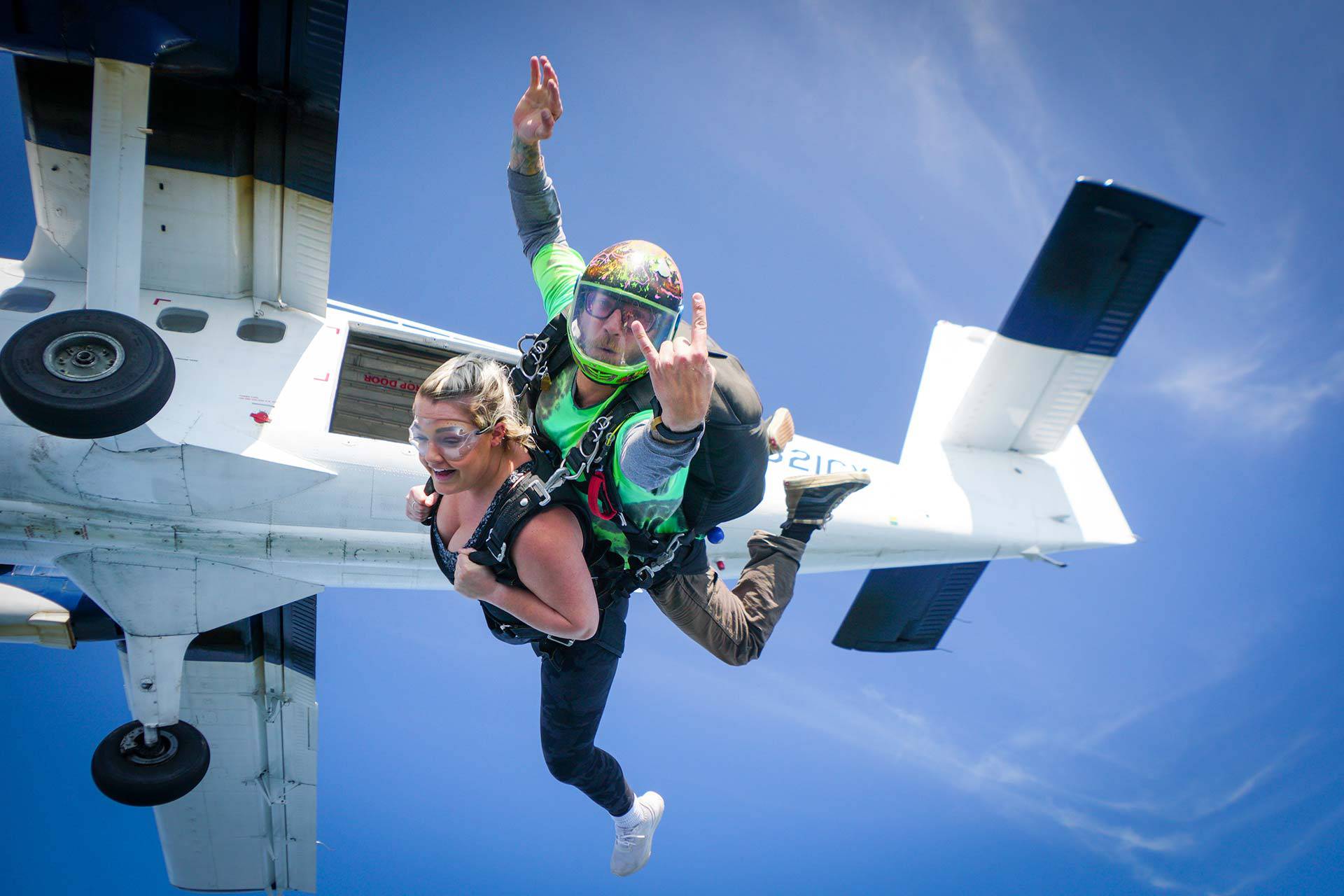
Skydiving Rules About Alcohol
Because alcohol affects an individual’s faculties, slows response time, and impairs judgment, it is easy to see why skydiving and alcohol don’t mix! Thus one of the skydiving rules that we stringently adhere to is a policy that you cannot participate in skydiving if you are under the influence of alcohol or other drugs. To quote verbatim from the Skydiver Information Manual Section 2-1:
“F. Alcohol and Drugs
- No person may make a parachute jump, or attempt to make a jump, if that person is or appears to be under the influence of either;
- alcohol.
- any drug that affects that person’s faculties in any way contrary to safety.
- No person may make a parachute jump, or attempt to make a jump, within 8 hours after the consumption of any alcoholic beverage.”
We take this rule seriously, and if it is suspected that you are under the influence, you will not be allowed to jump.
After the fact is a different story …
Skydiving Rules About Weather
As an outdoor activity that involves ascending nearly two miles above the earth, skydiving is, as you may imagine, greatly impacted by the weather. Likewise, it may come as no surprise that there are skydiving rules directly relating to the type of weather in which we can and cannot conduct jump operations. The skydiving rules about weather come directly from the FAA in the form of Federal Aviation Regulation 105.17:
No person may conduct a parachute operation, and no pilot in command of an aircraft may allow a parachute operation to be conducted from that aircraft—
(a) Into or through a cloud, or
(b) When the flight visibility or the distance from any cloud is less than that prescribed in the following table:
| Altitude | Flight Visibility (Statute Miles) | Distance From Clouds |
| 1,200 feet or less above the surface regardless of the MSL altitude | 3 | 500 feet below, 1,000 feet above, 2,000 feet horizontal. |
| More than 1,200 feet above the surface but less than 10,000 feet MSL | 3 | 500 feet below, 1,000 feet above, 2,000 feet horizontal. |
| More than 1,200 feet above the surface and at or above 10,000 feet MSL | 5 | 1,000 feet below, 1,000 feet above, 1 mile horizontal. |
The reason that skydiving through clouds is not permitted is a matter of safety. In part, it’s about being able to see where you are going when you are skydiving. If you cannot see the ground, you have no way of knowing if you are at the correct exit point to ensure a landing back at the dropzone. Additionally, the limited visibility also means that the clouds could be concealing other aircraft or other skydivers. A freefall collision could be disastrous, and so, if there is not an acceptable amount of visibility, jump operations will be grounded.
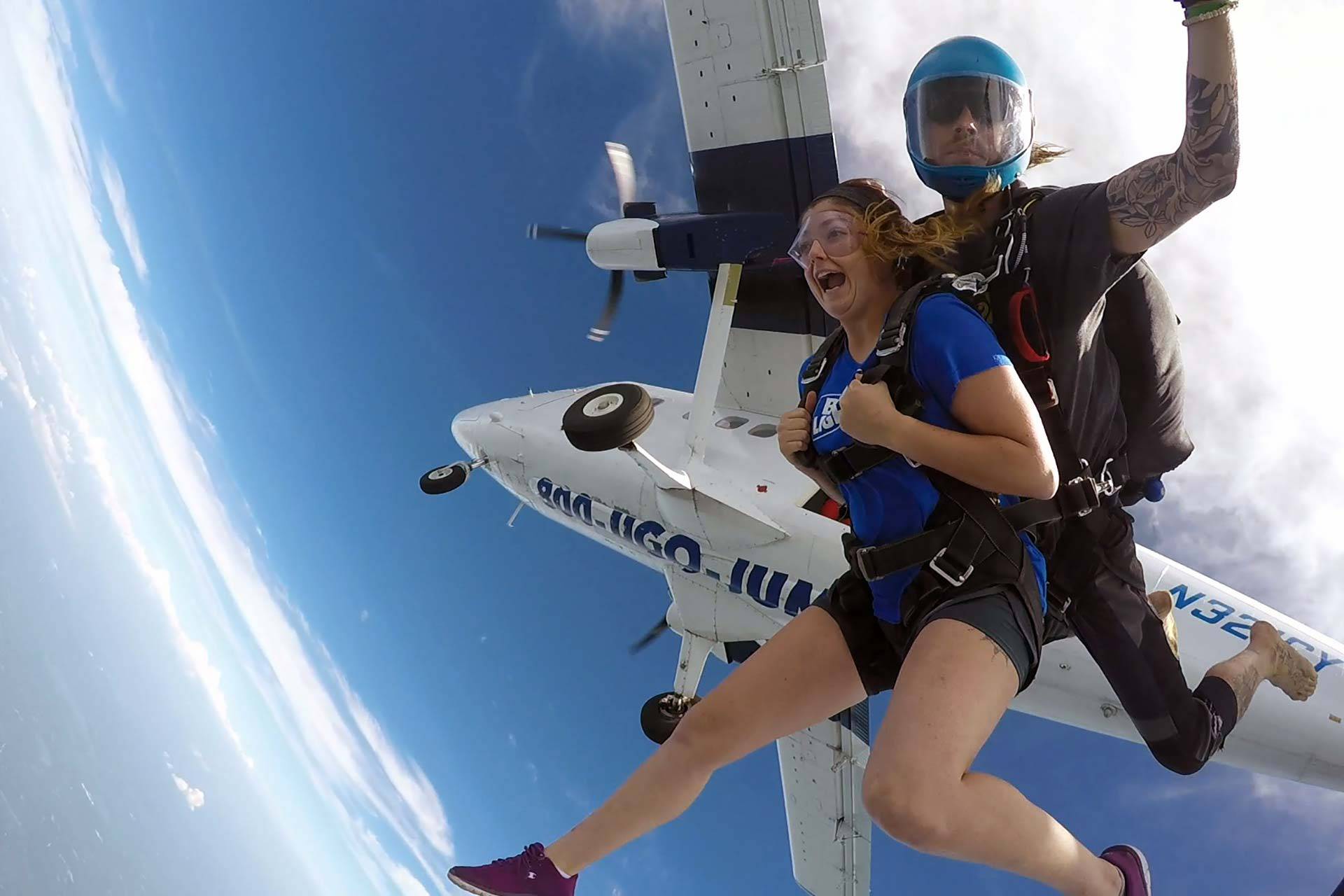
Skydiving Rules for Participant Age
The required age for tandem skydiving at USPA group member dropzones is 18. This rule is influenced by legal precedent: the legal age of majority, essentially when an individual is considered an adult by the law, is 18. In order for a waiver to be legally binding, the participant must legally be able to sign a waiver. If the individual is under 18, they cannot provide their legal consent. Exceptions to this rule have been made in special cases involving terminally ill children. Completing a tandem skydive under the age of 18 requires a special waiver from both the USPA and the tandem equipment manufacturer.
Skydiving Rules for Participant Weight
All of the parachute equipment used for skydiving has been issued a Technical Standard Order from the FAA. This TSO designates the weight load under which the equipment will properly function. For tandem skydiving, the weight load on the parachute, lines, and attachment points includes a combination of the weight of the instructor, the student, and the gear. Weight limits are in place for the safety of instructors and participants alike.
Each skydiving center will implement skydiving weight limits at their discretion. At Skydive New England our tandem weight limit is 240 lbs and our AFF weight limit is 225 pounds. Although, it should be noted that an individual’s proportions will also factor into the harness fit. In order to skydive, you will also need to be able to comfortably fit the skydiving harness.
There you have it: the top skydiving rules and regulations. Curious about anything else? Check out our FAQs or feel free to give us a call!
Categories:
You May Be Interested In:
Enter to Win a Free Skydive
Join our email list and enter to win a free tandem skydive. Drawings in April and December; winner announced on social media.
You’ll get a $10 coupon toward a tandem just for signing up! Must be 18 and under 240 lbs to jump.
*By submitting this form, you are consenting to receive marketing emails from Skydive New England, 40 Skydive Lane, Lebanon, Maine 04027. You can revoke your consent by using the SafeUnsubscribe link located at the bottom of every email. Emails are serviced by Constant Contact.
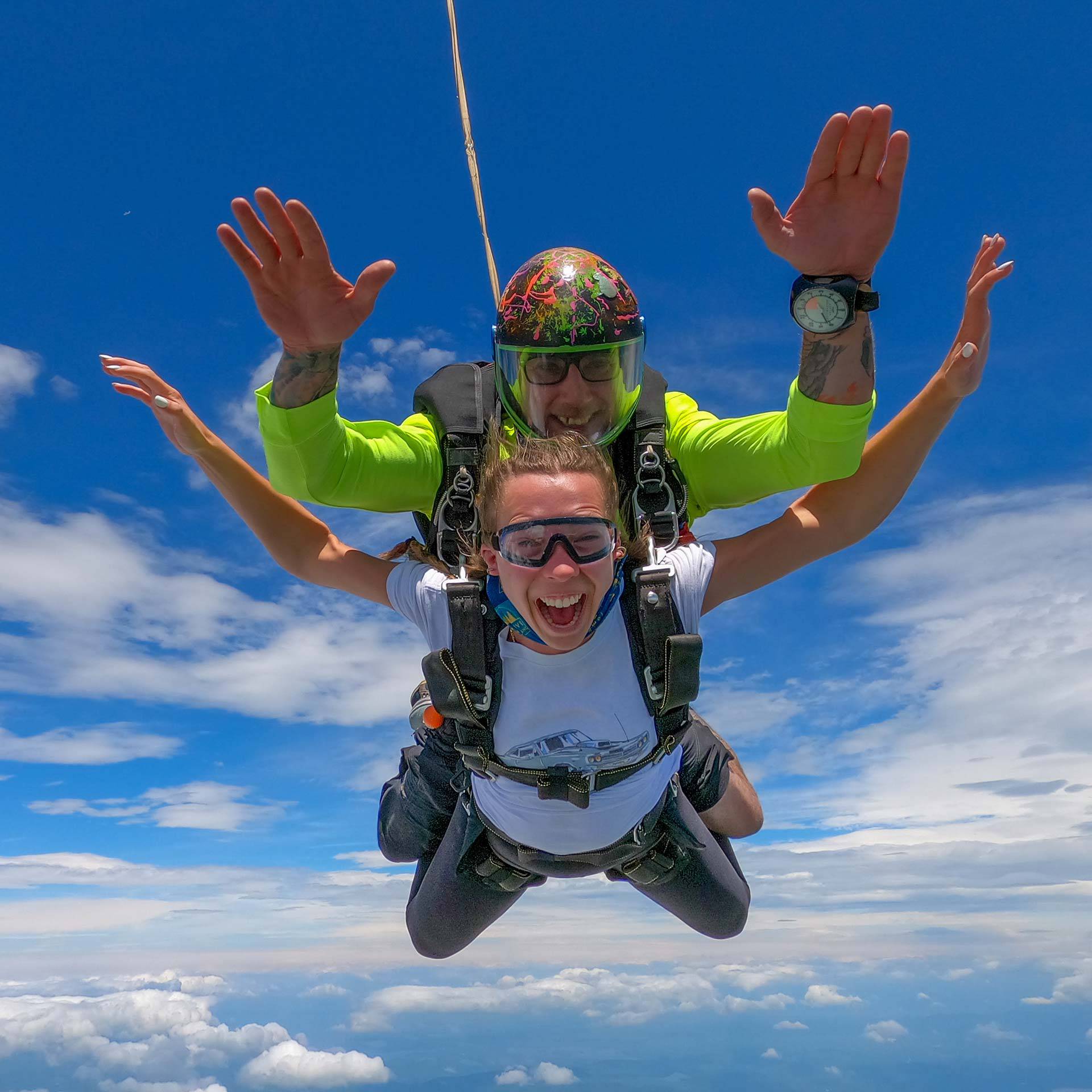
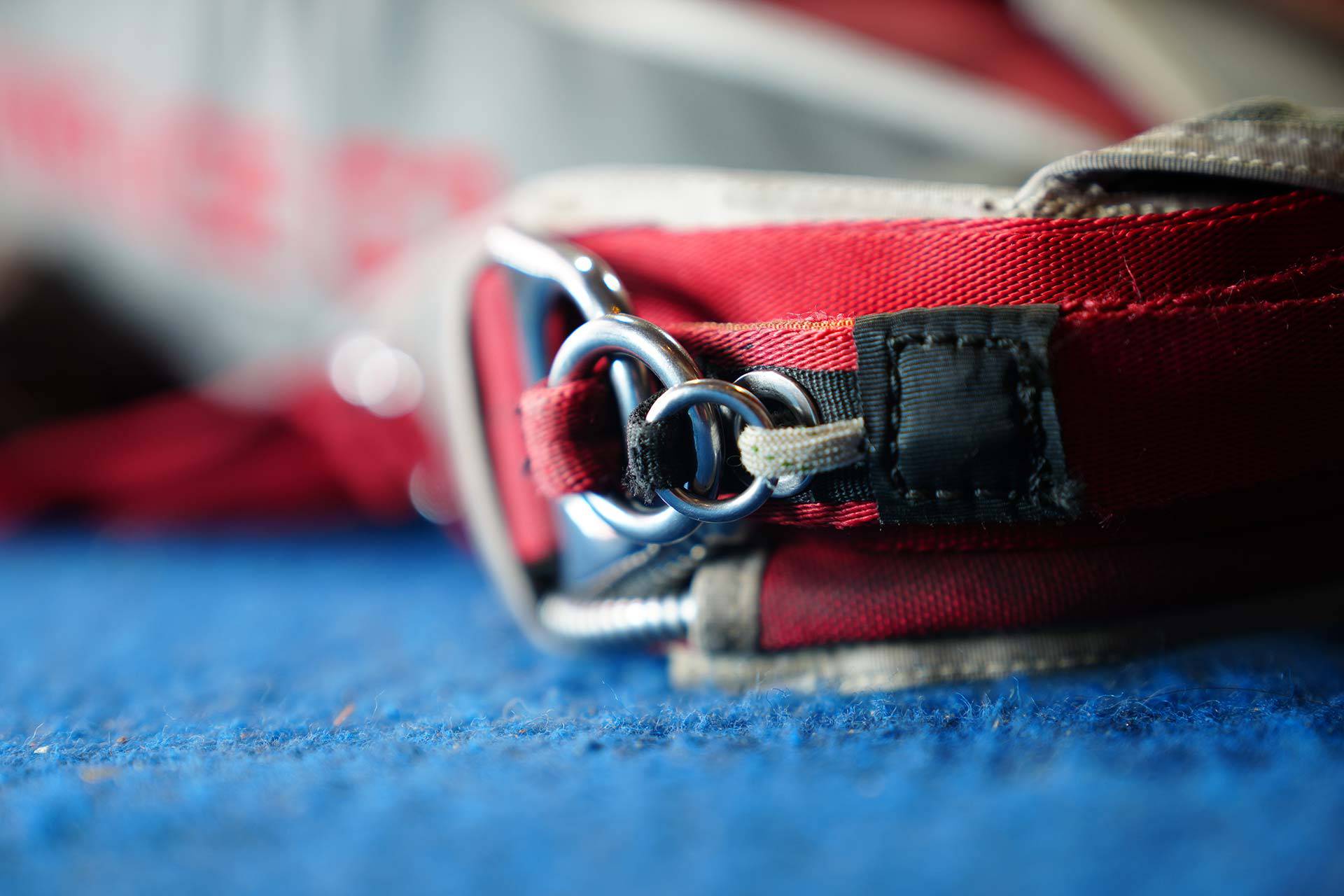
Even More Wicked-Fun Than It Looks!
Come see why the biggest DZ in New England is also the best.

